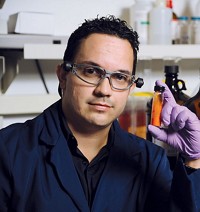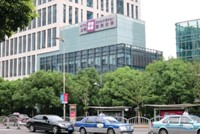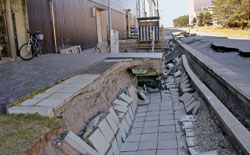Advertisement
Grab your lab coat. Let's get started
Welcome!
Welcome!
Create an account below to get 6 C&EN articles per month, receive newsletters and more - all free.
It seems this is your first time logging in online. Please enter the following information to continue.
As an ACS member you automatically get access to this site. All we need is few more details to create your reading experience.
Not you? Sign in with a different account.
Not you? Sign in with a different account.
ERROR 1
ERROR 1
ERROR 2
ERROR 2
ERROR 2
ERROR 2
ERROR 2
Password and Confirm password must match.
If you have an ACS member number, please enter it here so we can link this account to your membership. (optional)
ERROR 2
ACS values your privacy. By submitting your information, you are gaining access to C&EN and subscribing to our weekly newsletter. We use the information you provide to make your reading experience better, and we will never sell your data to third party members.
Synthesis
First Impressions Of Singapore
by A. Maureen Rouhi
March 12, 2012
| A version of this story appeared in
Volume 90, Issue 7

If people rated countries by the quality of their taxi systems, Singapore would be at the top of my list. The drivers are polite, and they engage passengers in civil conversation in English. The cars are clean, comfortable, and equipped with electronic credit card readers. Fares are cheap, taxi stands are clearly marked, and passengers patiently await their turn.
The taxi system is just one of many things about Singapore that I found impressive when I traveled to the city-state for the first time last month to deliver two seminars and visit two universities, one research institute, and three manufacturing facilities. Singapore is a Southeast Asian oasis in terms of its economy and standard of living. Among the members of the Association of Southeast Asian Nations—Brunei, Cambodia, Indonesia, Laos, Malaysia, Myanmar, the Philippines, Singapore, Thailand, and Vietnam—Singapore alone qualifies as a developed country.
The country—of 4.7 million people living in an area that is only about three-and-a-half times the size of Washington, D.C.—projects prosperity. I visited during the week before the Chinese New Year and saw shoppers pack the 22 multistory shopping malls lining Orchard Road, the famed retail and entertainment hub. I expected a bonanza of deep-discount sales, just like in the U.S. during holidays. Not so. Consumer merchandise is expensive in Singapore, I found, but people don’t seem to mind. According to the CIA World Factbook, the country’s unemployment rate is 1.9%, and no one lives below the poverty line. The economy is projected to have grown 5.3% in 2011.
To me, the chemistry labs are especially impressive. As I was touring the fabrication, processing, and characterization facilities of the Institute of Materials Research & Engineering (IMRE) and the chemistry teaching labs at Nanyang Technological University (NTU), I kept thinking: What a great place to do chemistry!
On the day I visited IMRE, Kerwin K. Zeming, a bioengineering Ph.D. student at the National University of Singapore, was operating a JEOL JSM 5600 scanning electron microscope to characterize the structures on the surface of a poly(dimethylsiloxane) sample. And using a field emission scanning electron microscope, Keyan Zang, an IMRE staff scientist, was examining the surface of a patterned silver film to determine the effects of defects on transmission properties.
At the chemistry department of NTU, students have direct access to multiple instruments for nuclear magnetic resonance spectrometry, mass spectrometry, electron paramagnetic resonance spectroscopy, and X-ray analysis. The teaching lab for organic synthesis has 196 1-m2 fume hoods—one per student—each made with all-glass walls for better lighting and better monitoring of surroundings.
Equally striking are the safety signs everywhere, including on door handles, “No Gloves!!”; on bathroom doors, “Strictly NO LABCOATS AND GLOVES are allowed!!!”; and on the entrance to the card-access-entry-only synthetic lab, “Wear gloves,” “LABCOATS NEEDED,” “NO FOOD & DRINKS,” and “EYE PROTECTION MUST BE WORN IN THIS AREA.” Also in the synthetic lab, a red line marks the point beyond which everyone should don protective lab wear.
As I looked around, the equipment abundance made me swoon. Seeing rows of rotary evaporators “is like heaven for me,” I confessed to my host, Roderick W. Bates, an associate professor of chemistry at NTU. As an undergrad isolating natural products in the Philippines, I had to work during evenings to get time on the single rotary evaporator my adviser’s students shared, I explained. “What I always used to hate was just standing around waiting for a melting-point machine to be available,” Bates countered. “Not here. None of our students ever has to wait to measure a melting point.”
“I wish I could go back to school,” I told Bates. “Come back, come back,” he replied. “We’ll enroll you.”





Join the conversation
Contact the reporter
Submit a Letter to the Editor for publication
Engage with us on Twitter